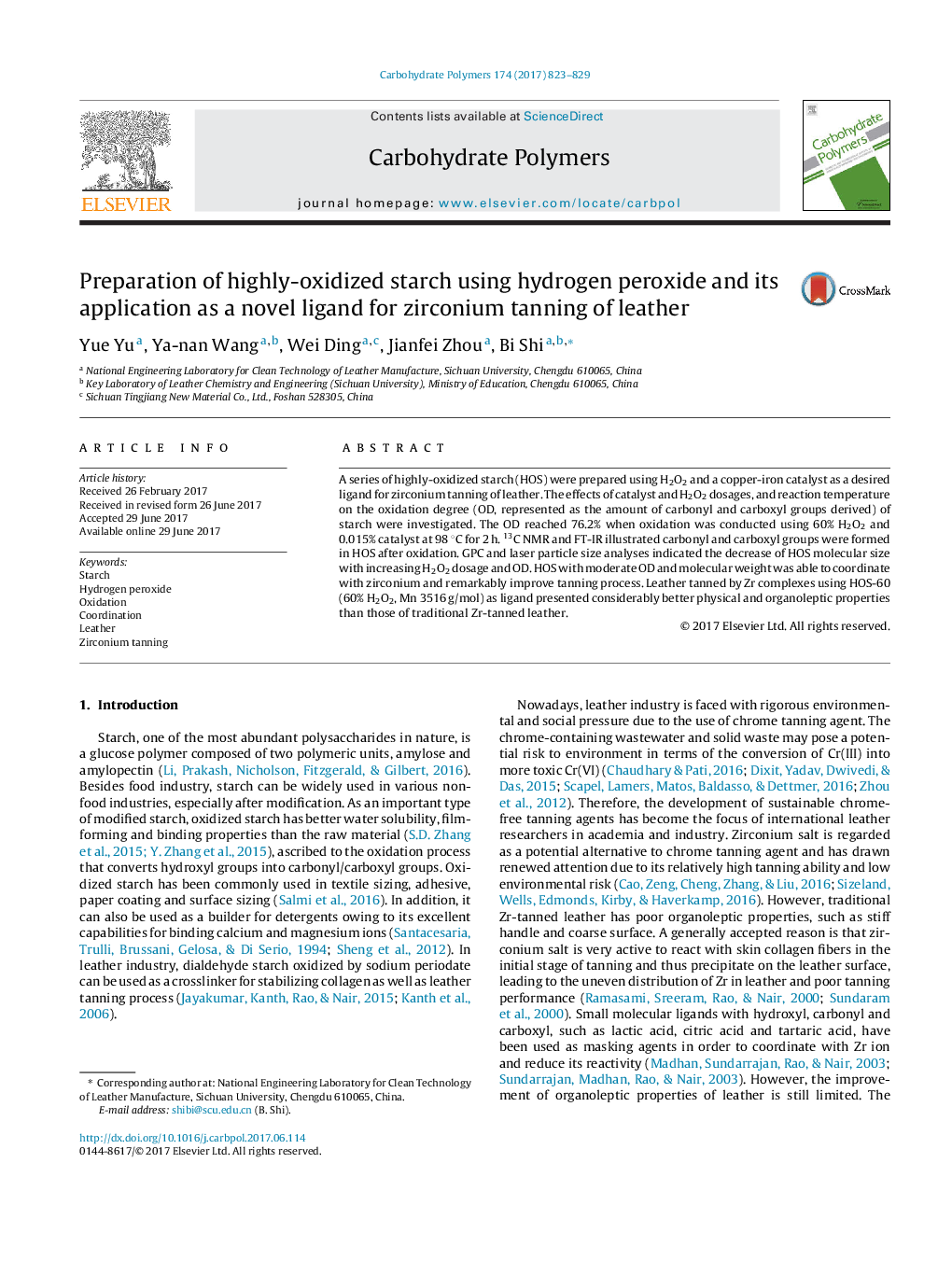| Article ID | Journal | Published Year | Pages | File Type |
|---|---|---|---|---|
| 5156870 | Carbohydrate Polymers | 2017 | 7 Pages |
Abstract
A series of highly-oxidized starch (HOS) were prepared using H2O2 and a copper-iron catalyst as a desired ligand for zirconium tanning of leather. The effects of catalyst and H2O2 dosages, and reaction temperature on the oxidation degree (OD, represented as the amount of carbonyl and carboxyl groups derived) of starch were investigated. The OD reached 76.2% when oxidation was conducted using 60% H2O2 and 0.015% catalyst at 98 °C for 2 h. 13C NMR and FT-IR illustrated carbonyl and carboxyl groups were formed in HOS after oxidation. GPC and laser particle size analyses indicated the decrease of HOS molecular size with increasing H2O2 dosage and OD. HOS with moderate OD and molecular weight was able to coordinate with zirconium and remarkably improve tanning process. Leather tanned by Zr complexes using HOS-60 (60% H2O2, Mn 3516 g/mol) as ligand presented considerably better physical and organoleptic properties than those of traditional Zr-tanned leather.
Related Topics
Physical Sciences and Engineering
Chemistry
Organic Chemistry
Authors
Yue Yu, Ya-nan Wang, Wei Ding, Jianfei Zhou, Bi Shi,
